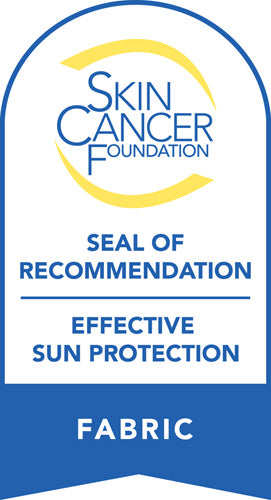When to Use Chemical Sunscreen vs Sun-Protective Clothing
Protecting yourself from the sun can include using chemical sunscreen and sun-protective clothing. Check out these tips for when each would be best used.
If you're like most people, you spend at least 30 minutes a day outside, though some of us spend upwards of an hour under the sun.
This time spent outdoors can do us a lot of good, but it can also put us at risk for skin damage due to UV radiation. In fact, depending on the UV index, you could start seeing the first signs of sunburn in around 10 minutes!
That's why it's important to know your options for protecting your skin. Products like chemical sunscreen and UPF clothing can help you avoid harmful radiation, but it's not always easy to know which one to pick. When should you reach for your favorite sun-protective shirt, and when should you slather on sunscreen?
Let's take a look at how these products work, their pros and cons, and when to use each.
How Chemical Sunscreen Works
Before we dive into the difference between these options, let's take a look at how chemical sunscreen prevents sunburn.
First, this type of sunscreen is absorbed into the skin. This is different from physical sunscreens, which sit atop the skin and deflect UV rays from there.
Once absorbed, active ingredients like octinoxate and avobenzone work to convert UV rays into heat. This heat then dissipates from the skin.
Benefits of Chemical Sunscreen
Chemical sunscreens can be great for people who prefer a topical SPF application that leaves less residue behind. Unlike physical sunscreens, chemical sunscreens don't often leave a greasy white film.
Sunscreen is also ideal if you're in an area where it's difficult to cover your body with clothing. Swimmers and beachgoers, for example, will want to slather sweat- and water-resistant sunscreen on areas not covered by a swimsuit or hat.
Drawbacks of Chemical Sunscreen
Because of the way it works, chemical sunscreen needs frequent re-applications. In direct sunlight, the active ingredients get used up fast.
In addition, the buildup of heat from chemical sunscreens can sometimes increase the risk of redness and skin irritation.
Even the best sunscreens see a bit of variation in SPF during third-party testing. This means the SPF on the label isn't always the SPF you're getting when you use the product in the wild. Worse, if you fail to apply the sunscreen correctly, or if you don't reapply it as often as you should, you could expose your skin to harmful radiation.
How Sun-Protective Clothing Works
Sun-protective clothing works a lot like physical sunscreen does. It sits atop the skin, blocking or reflecting UV rays before they can reach the body. Of course, unlike physical sunscreen, this type of clothing doesn't need reapplication!
The measure of sun protection depends on the clothing material, its weave, and any special surface treatments it gets. However, you'll need to check a garment's UPF rating to see what kind of protection you're getting.
UPF can be confusing for people used to sunscreen protection at first, as it differs from SPF. In general, a UPF of 30-40 is good protection from sun damage, while a UPF of 50+ is ideal.
Benefits of Sun-Protective Clothing
The main advantage of sun-protective clothing is its effectiveness.
Unlike chemical sunscreen, there's no way to apply an item of clothing the wrong way, and you don't need to reapply it. This makes it a no-brainer: if you throw on a protective garment, you don't need to worry about sun protection in the covered area for the rest of the day.
Even better, research suggests that some UPF clothing blocks up to 99% of UVB rays, whereas sunscreen only blocks between 76-94%.
In addition, while UPF clothing used to be a niche industry with few fashionable clothing items, it's quickly grown in popularity. Today, it's possible to find a huge range of fashions and garment types for any activity or style.
Drawbacks of Sun-Protective Clothing
As with any item, this type of sun protection has a few drawbacks.
First, it's hard to use sun-protective clothing on certain areas of the body. Unless you're wearing gloves, for example, you'll need to slather sunscreen on your hands for protection.
In addition, if your clothing doesn't get proper care, or if it gets wet, stretched, or damaged, it might become more transparent. This can make it lose some of its UV-resistant abilities.
When to Use Sunscreen vs UPF Clothing
In general, given the higher sun safety of UPF garments, we recommend defaulting to your favorite UV-resistant clothes when possible. For day-to-day protection and as your go-to activewear, UPF clothing is always a safe bet.
Of course, you'll also want to stick to a chemical sunscreen for certain outdoor activities, such as when you're out swimming or working up a sweat through a workout. On days when it's too warm to wear clothing that covers all of your skin, sunscreen can be great protection.
However, instead of choosing between these sun-protective strategies, why not use both and stay sun safe? As we've mentioned above, you may not always be able to stick with one or the other.
While sun-protective clothing is a more effective option for any area of skin it can cover, most people will need additional protection. This is crucial for any areas you choose not to cover with clothing, such as your hands, the tops of your feet, and exposed parts of your face and ears. Experts recommend that you start applying sunscreen about an inch under your sleeves and pant legs.
It's also ideal to use both options in circumstances where you're at an increased risk of sun exposure. When skiing, for example, the higher elevation and the reflection of sunlight on the snow can make it crucial to use both protective clothing and sunscreen.
Get More From Your Sun Protection
No matter what you're doing out in the sun, UPF clothing and chemical sunscreen are crucial. Using both of these solutions in tandem can help you create a truly UV-resistant cover across your entire body.
Of course, it's important to make sure you're getting high-performance clothing with a high UPF. To get the most out of your sun protection, check out our full line of UPF clothing!



